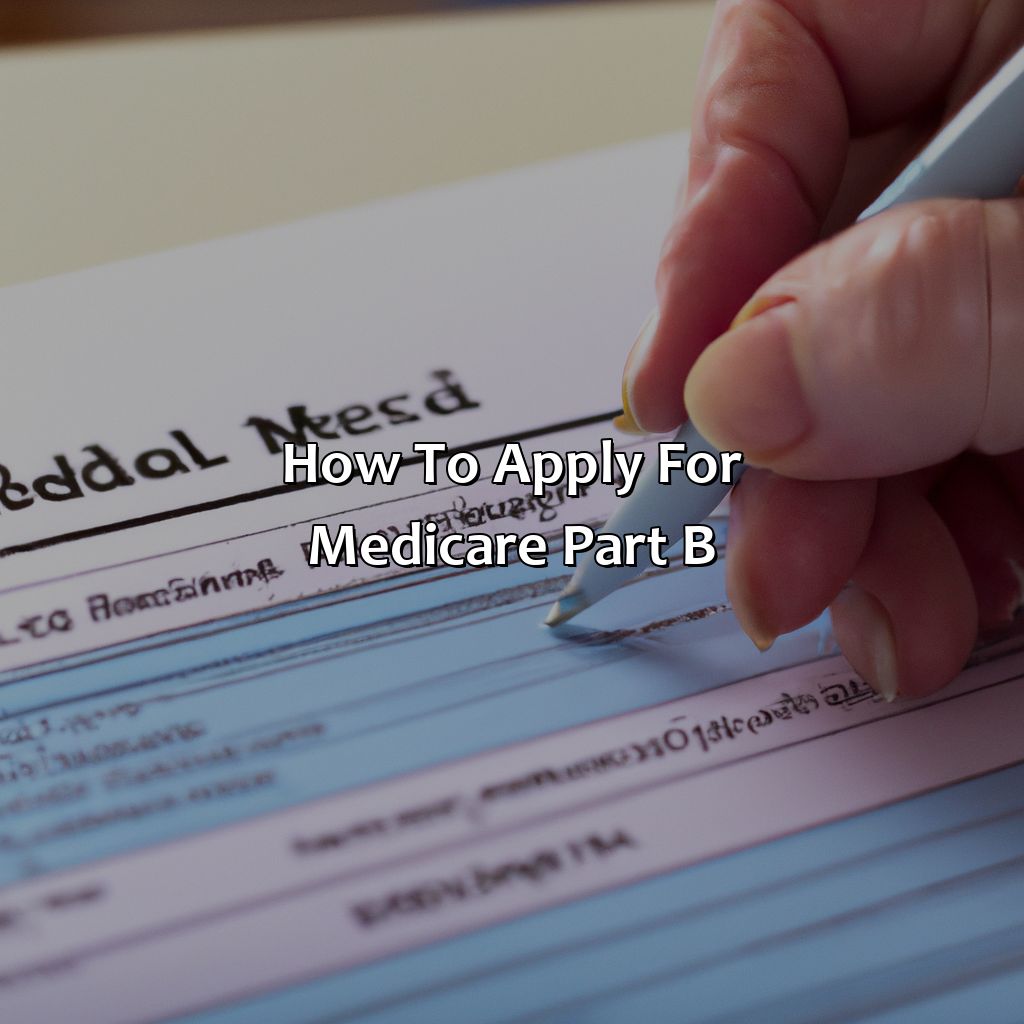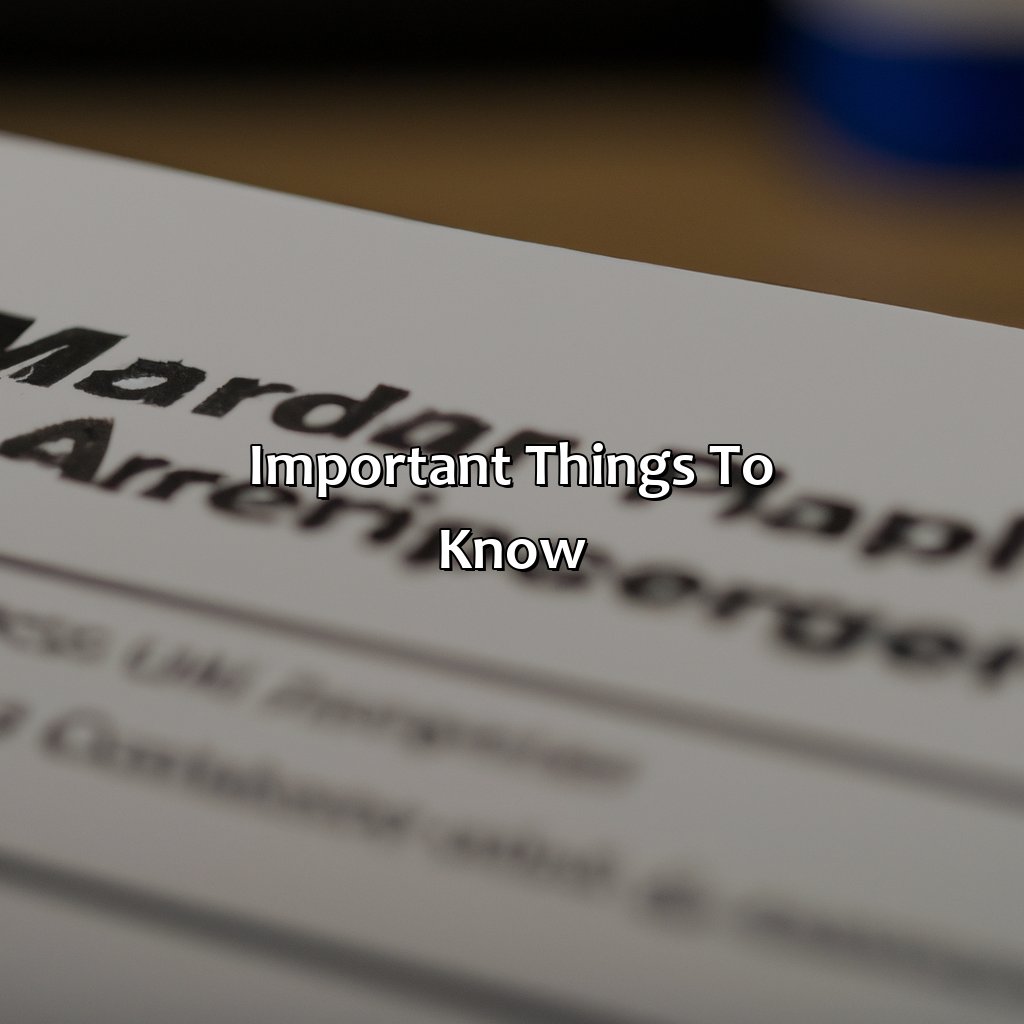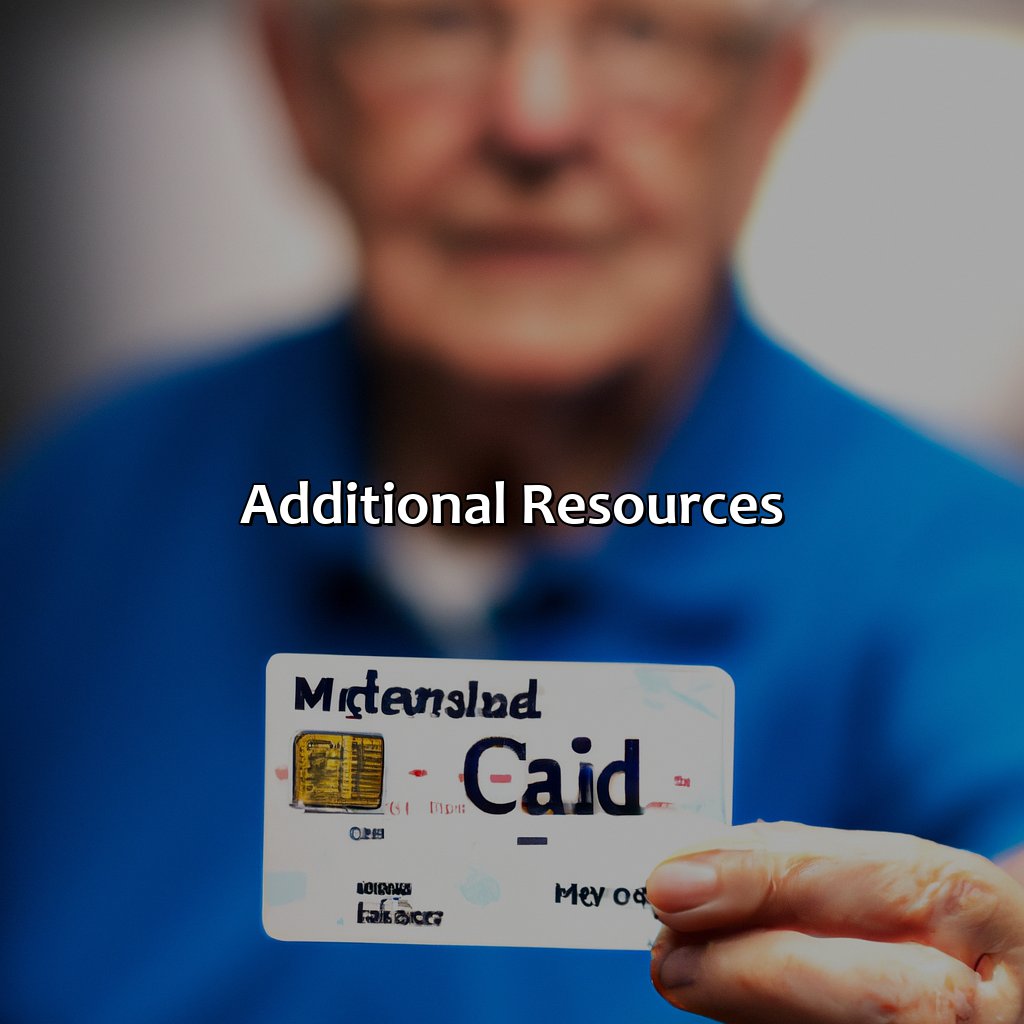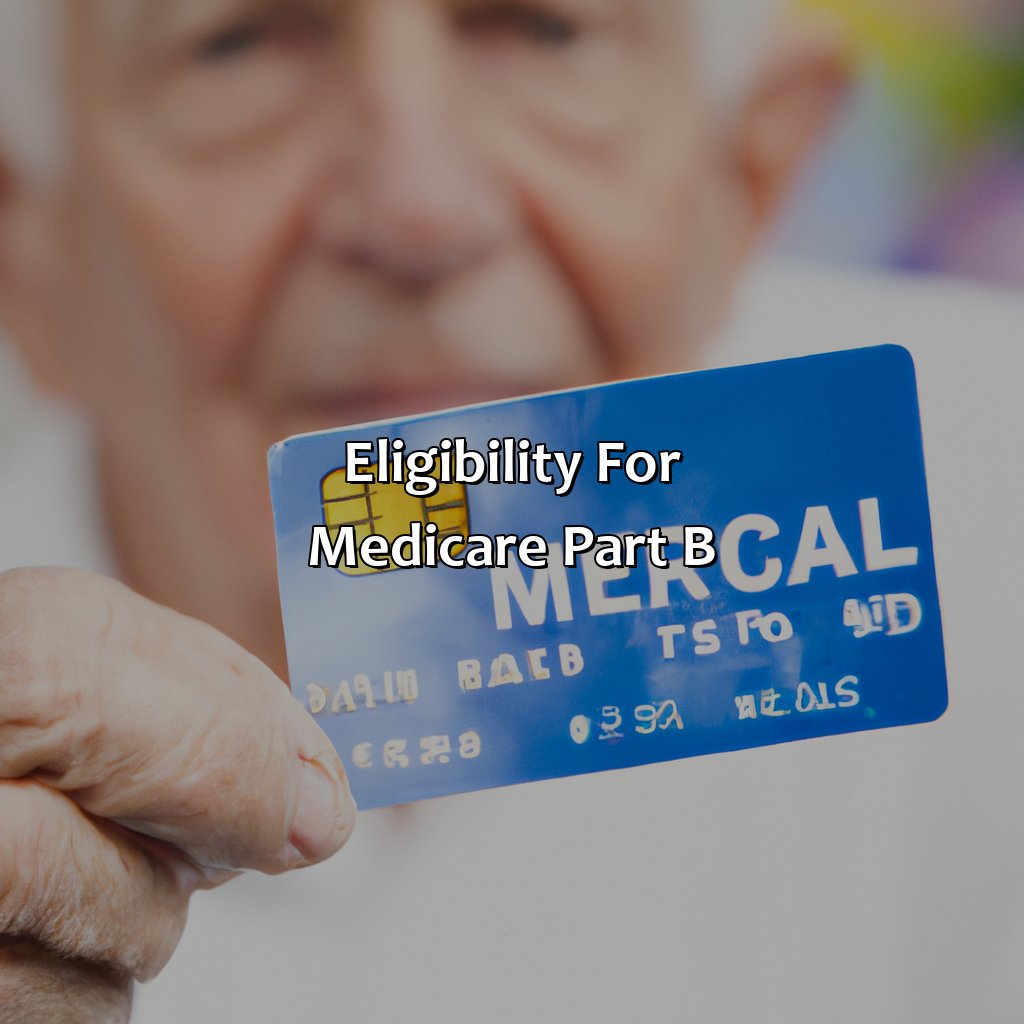How To Apply For Medicare Part B After Retirement?
Key Takeaway:
- Eligibility for Medicare Part B is dependent on age and enrollment period. Individuals who are 65 or older and meet other requirements are eligible for Medicare Part B. Enrollment period typically starts three months before the individual turns 65 years old.
- There are two ways to apply for Medicare Part B, including online application and paper application. Online application process is convenient and easy to use, whereas paper application requires mailing the application form to the Social Security office.
- It is important to understand the late enrollment penalty, coverage, and costs of the Medicare Part B plan. Late enrollment penalty may result in higher premium, and coverage and costs vary depending on the specific plan.
Retirement can be a stressful time, especially when it comes to managing health care. You may be wondering how to apply for Medicare Part B after you stop working. This article provides tips to help you navigate the process.
Eligibility for Medicare Part B
Find out if you’re eligible for Medicare Part B! You must fulfill certain criteria to access its benefits, such as doctor’s visits and outpatient care. Age and enrollment period are two key factors. To learn more about these, keep reading!
Image credits: retiregenz.com by David Duncun
Age requirement
To be eligible for Medicare Part B, an individual must be 65 years or older, or meet certain disability requirements. It is important to note that there may be late enrollment penalties if one does not sign up during the initial enrollment period.
In addition to age and disability requirements, individuals must also be a U.S. citizen or legal resident for at least five continuous years. It is recommended to apply for Medicare three months before turning 65, as there may be a delay in processing applications.
Furthermore, those already receiving social security benefits will automatically be enrolled in Medicare Part B. It is important to check with current employer-provided healthcare coverage before enrolling in Medicare, as it may affect eligibility or coverage options.
A common misconception is assuming that Medicare Part B is automatically provided upon retirement. However, individuals must take active steps to enroll and ensure proper coverage during their retirement years.
Enrollment period: the only time when procrastination can cost you more than just a bad grade.
Enrollment period
The period of time during which you can enroll in Medicare Part B is crucial for eligibility and coverage. It is imperative to apply during the Initial Enrollment Period (IEP) or Special Enrollment Period (SEP). The IEP spans seven months – three before turning 65, the month of turning 65, and three months after that. SEP allows enrollment outside this window with certain stipulations.
If you miss these periods, there might be late fees and coverage gaps. Enrolling in Medicare Advantage might limit future Part B enrollment chances, so consider all options beforehand. After enrolling, premiums should be paid regularly to maintain coverage.
In case of retiree health plans or COBRA, they may delay the IEP; retain documentation for late-enrollment waiver requests afterward.
Did you know? People who miss their Initial Enrollment Period can enroll from January to March each year but will incur a premium penalty by doing so.
Applying for Medicare Part B is easier than getting your adult children to call you back.
How to apply for Medicare Part B
To get Medicare Part B after retiring, you must understand the online and paper application processes. This part will guide you through the steps. There are two main ways to apply: the online process and the paper process. Get ready to apply!
- Online Process
- Visit the Social Security website
- Click on the “Apply for Medicare” button
- Follow the step-by-step instructions to complete your application
- Once your application is submitted, you will receive a receipt that you can print and keep for your records
- Paper Process
- Obtain a copy of the “Application for Enrollment in Medicare Part B” (Form CMS-40B)
- Fill out the form completely
- Mail the form to your local Social Security office
- Once your application is processed, you will receive a letter in the mail letting you know if you’ve been approved for Medicare Part B
The online process offers a quick and easy way to apply for Medicare Part B. To apply online, follow these steps:
If you prefer to apply for Medicare Part B through the mail, follow these steps:

Image credits: retiregenz.com by Joel Jones
Online application process
Medicare Part B Online Enrollment: A Step-by-Step Guide
To enroll in Medicare Part B online, follow these six steps:
- Go to the Social Security Administration’s website and click on “Apply for Medicare.”
- If you already receive retirement benefits, select “Yes.” If not, select “No” and fill out your personal information.
- Enter the date you want your Medicare coverage to begin. This can be up to three months in the future.
- Fill out the remaining application questions and submit your application.
- You will receive a confirmation page with a reference number. Print this page or write down the number for your records.
- Your Medicare card will arrive by mail approximately three weeks after you’ve been enrolled in both Medicare Parts A and B.
Keep in mind that if you’re still working and have employer-provided health insurance, you may want to delay enrolling in Part B until after you retire. However, if you’re close to retiring or are losing employer-based coverage, it’s important to apply promptly.
According to Kaiser Family Foundation, 91% of those age 65+ were enrolled in Medicare as of 2019.
Why bother with online applications when you can have the thrill of filling out paper forms by hand for Medicare Part B?
Paper application process
To apply for Medicare Part B via the paper application process, you will need to fill out the CMS-40B form. Make sure you complete the entire form and sign it before submitting it to your local Social Security office or mailing it to them directly. Include any necessary supporting documents, such as proof of citizenship or residency.
It is important to note that applying through the paper process may take longer than online applications, and there is no guarantee that your application will be accepted. Consider calling your local Social Security office beforehand to ask any questions and ensure you are providing all necessary information.
One unique detail to consider is that some individuals may automatically be enrolled in Medicare Part B if they are already receiving Social Security benefits when they turn 65. However, if you are not automatically enrolled or have delayed enrollment due to continuing work coverage, the paper application process may still be relevant for you.
To ensure a smooth and successful application process, consider double-checking all information before submitting the form and following up with your local Social Security office if needed.
Getting older may suck, but at least Medicare Part B is there to soften the blow – just don’t forget to dot your I’s and cross your T’s.
Important things to know
For a successful transition into retirement, one must comprehend Medicare Part B. To apply, there are several things to be aware of such as the late enrollment penalty and coverage and costs. Let’s dig deeper into these areas to assist you in a successful Part B enrollment.

Image credits: retiregenz.com by James Jones
Late enrollment penalty
Missing the deadline to enroll in Medicare Part B may lead to financial penalties. These penalties are known as Late Enrollment Penalties or LEPs. The Late Enrollment Penalty can increase your monthly premium amount, and this increase applies for the entire duration of your enrollment in Medicare Part B.
It’s important to note that not everyone is subject to LEPs. For instance, individuals with a credible coverage policy from an employer are exempted. However, if you don’t qualify for such exceptions and miss your enrollment deadline, you’ll be required to pay up a 10% penalty charge on top of the monthly premium rate when you eventually sign up.
To avoid the risk of dealing with costly LEPs, ensure you enroll for Medicare Part B within the initial seven-month enrolment period that begins three months prior to turning 65 years old and ends three months after your 65th birthday month!
Recently, Emma missed her Medicare Part B enrollment deadline because she had no relevant or actionable information on hand at the time. Emma paid a lasting heavy price since her premiums shot up significantly because of delayed enrolment. Don’t be like Emma – understand LEPs and take action!
Retirement may be relaxing, but navigating Medicare part b coverage and costs will make you feel like you need a prescription for Xanax.
Coverage and costs
Medicare Part B is vital in securing coverage for medically necessary services, such as doctor’s visits and outpatient care. However, understanding the expenses may be daunting. Enrollees are required to pay monthly premiums, an annual deductible, and co-insurance.
It is important to note that income level can affect these costs. Those with higher incomes may have to pay more than the standard amount, whereas those with limited resources might qualify for financial assistance programs.
Additionally, Medicare Advantage plans may also cover Part B services but with different costs and restrictions. Making informed decisions can help minimize out-of-pocket charges.
Pro Tip: Keep in mind the enrollment window for eligible individuals is seven months long starting three months before their 65th birthday month. Plan accordingly to ensure you don’t miss your chance to enroll in Part B without penalty fees.
Get ready to dive deep into Medicare with these additional resources, because nothing says retirement like navigating government healthcare policies.
Additional resources
After retiring, to get more information about Medicare Part B, check out extra resources. Like the Medicare Website or contact the Local Social Security Office. These sources offer helpful details and help, making the application process hassle-free and easy.

Image credits: retiregenz.com by Harry Washington
Medicare website
The online portal of Medicare is a comprehensive resource to apply for Part B insurance following retirement. Simply visit the official Medicare website to access this feature.
Once on the website, follow the intuitive prompts to create an account and complete your enrolment application. Make sure to have all necessary details such as personal information, previous coverage plans, and desired coverage options before starting.
For further guidance or to seek clarification on any issues you may encounter, Medicare customer service is available 24/7 via phone or email support.
Pro Tip: It is recommended to apply for Part B insurance during the initial enrollment period that starts three months before turning 65 to avoid late fees or gaps in coverage.
Local Social Security office
For assistance with Medicare part B enrollment, the nearby governmental Social Security agency can provide comprehensive information on sign-up procedures. They may also show you how to apply digitally via their official website. Engaging directly with the local government’s Social Security representative is beneficial since they will know the most about your particular situation and be able to provide tailored advice.
If applying in person or by phone, make sure to obtain patient-specific instructions and double-check all details before submitting your application. A mistake on your application could result in a delay or rejection of benefits, implying that you will not be covered when you need it most.
It is strongly advised that you enlist an authorized Medicare insurance agent if you are unsure about medical insurance decisions, coverage options or plan providers. These agents can examine various plans, description premiums, copays and deductibles specific to different regions or providers.
Two years after retiring from teaching high school courtesy of Diane Kagan (fictional name), she finally received her complete retirement leisure lifestyle well deserved vacation. It was only when attempting to schedule medical appointments throughout her casual outings that she discovered there had been a problem with her Medicare registration form several years ago during retirement preparations resulting in erroneously declined benefits immediately following retirement eligibility.
Some Facts About How To Apply For Medicare Part B After Retirement:
You have a 7-month Initial Enrollment Period (IEP) to sign up for Medicare Part B after you retire or lose employer coverage. (Source: Medicare.gov)
If you miss your IEP, you can still enroll in Medicare Part B during the General Enrollment Period, which runs from January 1 to March 31 each year. (Source: SSA.gov)
If you delay signing up for Part B, you may face a penalty of 10% of the premium for each 12-month period you were eligible but didn’t enroll. (Source: Medicare.gov)
If you’re still working and have group health insurance coverage, you may be able to delay Part B enrollment without penalty. (Source: SSA.gov)
You can apply for Medicare Part B online, by phone, or in person at your local Social Security office. (Source: Medicare.gov)
FAQs about How To Apply For Medicare Part B After Retirement?
How can I apply for Medicare Part B after retirement?
There are several ways to apply for Medicare Part B after retirement:
- Online through the Social Security Administration website
- In-person at your local Social Security Administration office
- By phone by calling the Social Security Administration
When should I apply for Medicare Part B after retirement?
If you are retiring and have group health insurance coverage through your employer or union, you can sign up for Medicare Part B when you first become eligible for Medicare without paying a penalty. However, if you delay enrollment in Medicare Part B, you may incur a late penalty and may have to wait until the next General Enrollment Period to enroll.
What documentation do I need to apply for Medicare Part B after retirement?
When applying for Medicare Part B after retirement, you will need your Social Security number, your Medicare card, and proof of your retirement, such as a letter from your employer or a pension statement. You may also need to provide information about any group health insurance coverage you have through your employer or union.
How long does it take to apply for Medicare Part B after retirement?
The time it takes to apply for Medicare Part B after retirement depends on the method you choose. If you choose to apply online, the process can be completed in as little as 10 minutes. If you choose to apply in person or by phone, it may take longer due to wait times or the need to provide additional documentation.
Will I be automatically enrolled in Medicare Part B after retirement?
If you are receiving Social Security retirement or disability benefits, you will be automatically enrolled in Medicare Part B when you become eligible. However, if you are retired but not receiving Social Security benefits, you will need to enroll in Medicare Part B on your own.
What happens if I don’t apply for Medicare Part B after retirement?
If you do not apply for Medicare Part B after retirement, you may incur a late penalty. This penalty is added to your monthly premium for as long as you are enrolled in Medicare Part B. In addition, you may have to wait until the General Enrollment Period to enroll, which can cause a gap in your healthcare coverage.
 Checkout this IRS Loophole
Checkout this IRS Loophole 




